If you stopped by hoping to see a site about model railroading then you will have to do the same thing as I – be patient. Never would I have imagined on Christmas morning 2009 that it would take almost a year and a half to make the basement ready for trains. Had you asked back then I surely would have said I would be running trains by now. Ha, how wrong I would have been. Although I am making forward progress and that’s what counts.
In the last post the workbench counters were almost finished. Today, they are done and are already covered in sawdust making more pieces for the basement. Having the radial arm saw functional is a joy. My oh my how much easier it is to make nice cuts with this saw. It is the primary workhorse in the latest step – baseboards.
Our house is built on a permanent wood foundation (PWF) instead of the usual poured concrete or block found under most homes. PWF foundations are not well known outside the upper Midwest. Originally they were developed as a means of permitting house construction to continue through the brutally cold winter months when it is too cold to pour concrete. In addition, they allow a framing crew to build the entire house from the ground up. General contractors really like this aspect. For the homeowner a PWF has some unique advantages over concrete and block. First, there is none of the usual musty smell associated with basements. The basement is simply another floor of the house. Second, the 2×6 construction method of the foundation walls is ideal for finishing. The 5-1/2″ cavity is perfect for R19 insulation and the drywall can be directly screwed to the foundation studs. No furring strips required. Finishing a basement could not be any easier than with a PWF.
The concrete floor of a PWF basement is also a bit unique. On the positive side it sits on a bed of pea stone. Pea stone has 99%+ compaction ratio as poured. This means the concrete floor is sitting on a bed of rock that doesn’t settle unevenly like a conventional basement dirt pit. Our basement is 2000 sq ft and 7 years old without a single crack anywhere and I expect it to stay that way forever. The potentially negative aspect is the floor surface is above the PWF wall footers. This creates “pockets” at the base of the walls where any water runoff from the floor will become trapped with no means of draining. As built there is no seal between the screed board and the wall. This allows water to drain to the pea stone bed below. Because I was installing drywall and wanted to reduce the moisture permeation to the absolute minimum I caulked this otherwise open path to the stone bed. While this will greatly reduce moisture being introduced from the ground it also means there is no water drain route in the event of flooding.
The drywall was installed 5″ off the floor along the PWF walls. This permits access to the “pockets” both for removing any water in the event of a flood and also serves as inspection access for a potential buyer should we decide to sell the house. This 5″ gap serves its intended purpose but complicates baseboard installation. Not only does it necessitate rather tall baseboards it also means a spacer is needed to bring the baseboards flush with the drywall sheet. I have cut 15/32″ treated plywood into 4″ strips for the spacers. The baseboards are 1×8 white pine spaced 1/8″ off the floor. The plywood spacers are glued to the backside of the baseboards after they are cut to size. I plan to install the baseboards to the PWF walls with small screws so the baseboards can be removed at will. Baseboards on the interior walls will be nailed as traditional.
Once all the baseboards are cut, stained, and installed in the workshop area I will move on to the train room and finally the bathroom. Hopefully my next post will be a basement with 480 linear feet of real pretty baseboard!
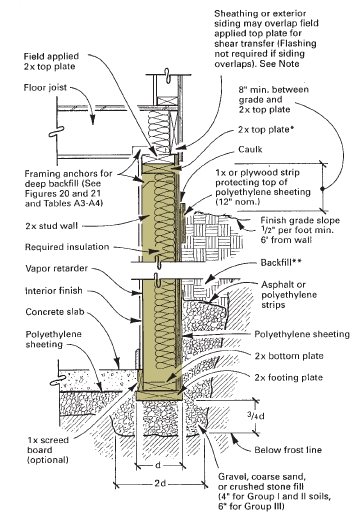
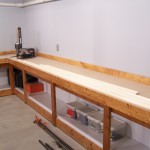
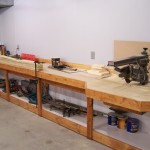
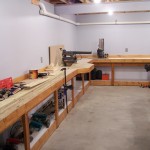
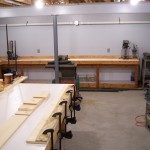
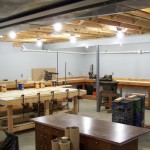
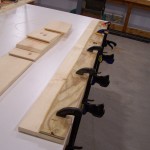
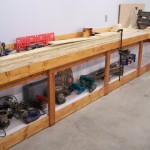
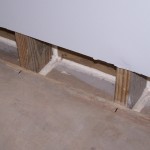
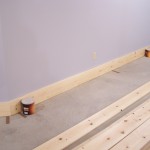
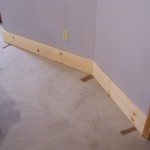
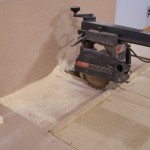
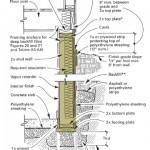

Leave a Reply